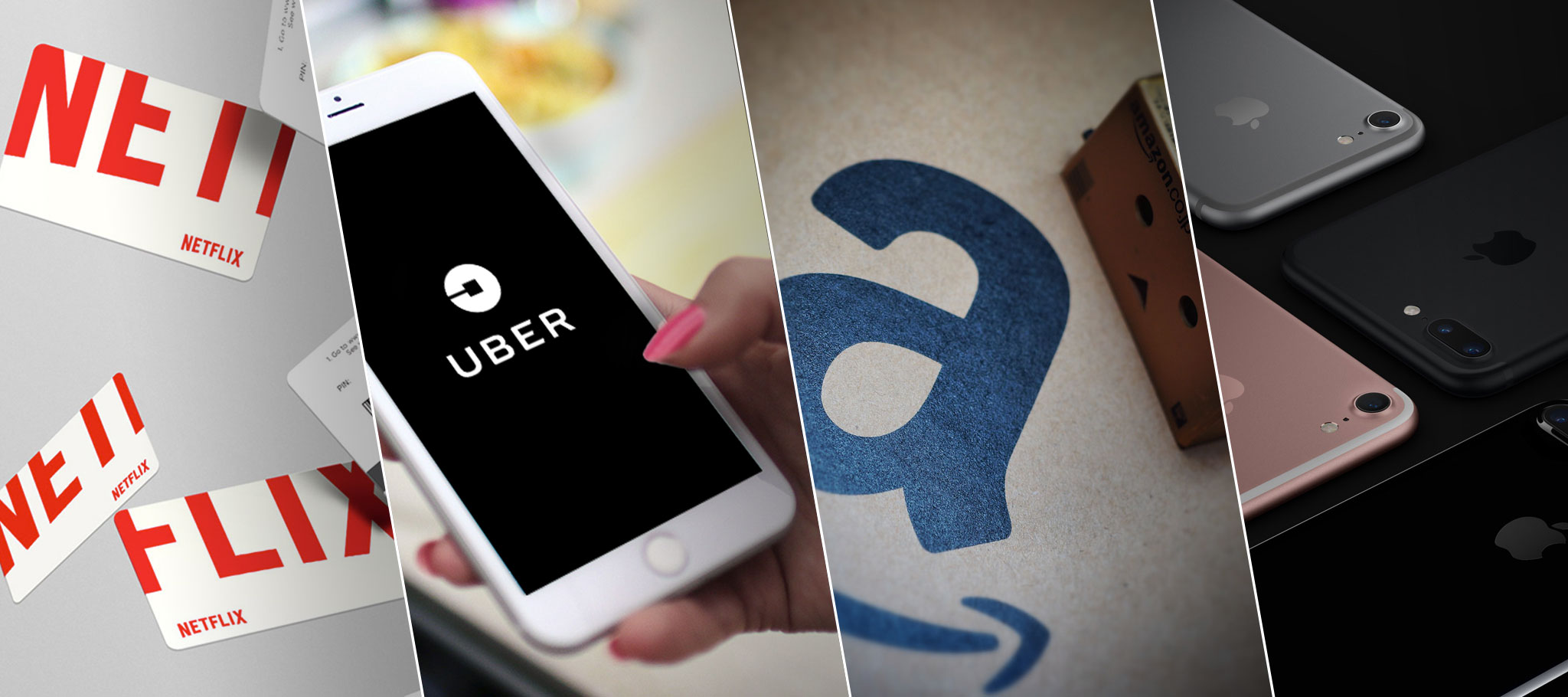
9 Tactics that Create Value for Digital Customers
Creating more value for customers is how highly successful digital companies like Uber, Amazon, Netflix, and Apple got to where they are today.
So how do you improve your customer value? Think of customer value as an equation — how much do you give me in exchange for how much I give you? There's the "cost" side of the equation for the customer, and there's the "benefits" side. Great customer value engineering innovates on both sides of that equation.
Cost
An important part of the "cost" is the money the consumer spends, but it is also measured in time, convenience and level of effort. If the customer has to work harder to extract the value from your offering, this is a perceived increase in cost.
Let’s take the example of Netflix. They have always been aggressive about providing access to large volumes of content for an accessible monthly charge. Their current lowest price is $7.99 per month, less than the cost of a single movie ticket. Netflix also works hard to use personalization to lower the effort it takes to find and play content on any device.
Here are four key ways to reduce the "cost" side of your value proposition. Consider which of these might apply to your offering.
- Charge less. This is the most obvious step. The danger is that competing on price alone can be a dangerous game and take both you and your competitors into a place where it can be difficult to make money or run a sustainable business. However, we see many of the most successful companies in the digital space not necessarily "discounting" their offer but finding ways to re-engineer their entire cost model via innovative approaches that leverage this new digital world in order to offer more for less. For example, Amazon is able to undercut the prices of many brick and mortar retailers because they don’t have the cost of retail stores and because of the large scale of their operation. Google is able to offer email for free because they have devised a way to make money via advertising rather than charging for the service.
- Change your payment model. Blockbuster rented videos on a "per video" basis. Netflix's first innovation was not streaming or House of Cards but rather the subscription model for video "rental." Similarly, Amazon created a major innovation with Amazon Prime when they offered subscription 2-day shipping services. But subscription is not the only way to change the game. Disaggregation is another. Apple changed the music industry by focusing on selling individual tracks of music rather than entire albums. They then applied this same approach to episodic TV episodes which were previously only available to be purchased in "full season" DVD sets.
- Reduce the customer’s effort. Uber takes the effort out of getting around. They extremely simplified the process of ordering a car service, paying, talking to the driver about where you are headed and managing your expense records. These may be small things, but they add up. Just like we are willing to pay more for milk at 7-11 to avoid the grocery store if your offering is less effort for the user it reduces the overall "cost.”
- Reduce unexpected costs. Look for opportunities to save a user money that they would be paying to someone else. If a user can drive less or avoid shipping costs, you have saved them money, and they may not mind giving you a little more. An old-school example, AAA sells roadside assistance but included with this subscription are discounts to most hotels and some other travel-related services. These discounts cost AAA nothing and add value to the membership.

Apple changed their payment model and the music industry by focusing on selling individual tracks of music rather than entire albums.
Value
Now that we've removed some of the "cost,” how can we improve the value? Here are five techniques to increase value.
- Offer more stuff. HBO recently partnered with Sesame Workshop to add over 20 seasons of Sesame Street to their on-demand offering. Dropbox continues to increase the storage they will give you for your $99 monthly subscription. Consider cost-effective ways to simply give the user more of what they are coming to you for.
- Add features. Google office massively increased the value of their "PowerPoint" competitor by enabling cloud-based real-time collaboration. Consider how to expand the features your product offers to add value.
- Increase shareability. The more people that can utilize a single purchase, the more value it has. Apple created their family plan so that apps purchased from their App store can be used by anyone in the family. Amazon created a way to "lend" a Kindle book to a friend.
- Increase durability or longevity. Extending the realistic lifespan of your product extends the value. For example demonstrating the "future-proofing" you have included in your solution so that it will be forward-compatible with the "next generation" of technology adds value to your offer.
- Add flexibility. If customers can use your product in different ways, apply it to more "needs" in their life, this increases the value. You may have subscribed to Dropbox to share files with clients, but Dropbox has added and promotes features also to make it a great place to sync and store your personal photos and act as a "backup" in case of hard drive failure. Apple constantly markets the diverse ways their products can be used. iPhones are also cameras, calculators, GPS devices, musical instruments, word processors, currency converters and presentation tools. Every additional way your iPhone can be used potentially replaces another product you would have to buy and adds value.
Which of these opportunities to enhance the value equation for your customer best fit your business? For those that don't seem to "fit," try a thought experiment for each and consider if it did fit, how would you apply it? You might discover a breakthrough that would transform your whole value proposition.